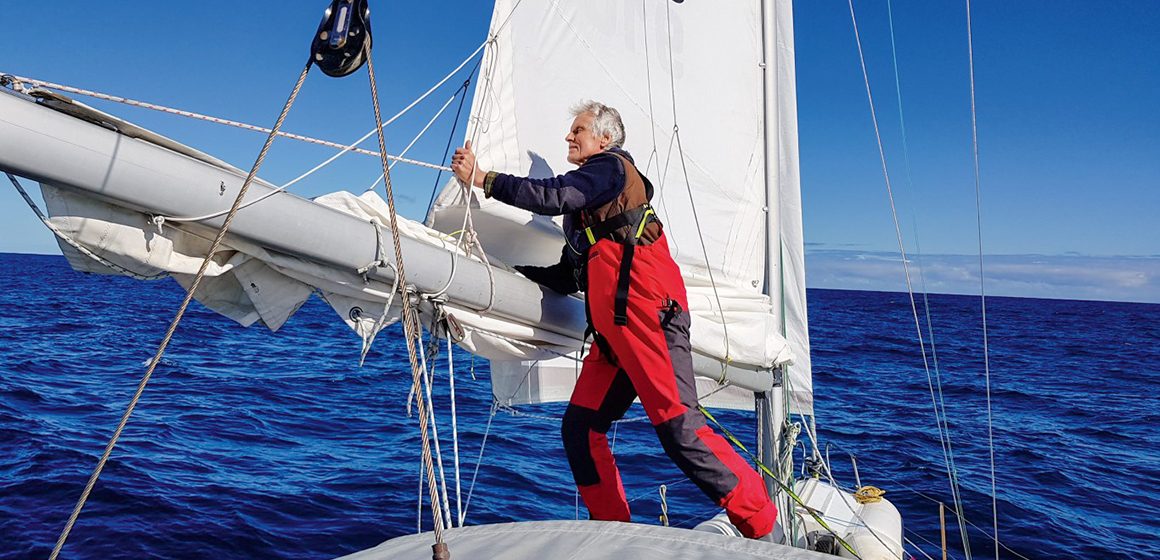

Everyone dealt with Covid lockdown’s cabin fever last year in different ways. Mike Delamore took off on a solo circumnavigation of New Zealand. Story by Alex Stone.
t’s surprising how few people have done this – or perhaps not surprising, given the rugged nature of the Fiordland and Wairarapa coasts. That was where the trimaran Rose Noelle came to grief in 1989, if you recall. Which led to a survival tale for the ages, when John Glennie, James Nalepka, Rick Hellriegel and Phil Hoffman survived adrift on the wreckage for 119 days, before washing up on Great Barrier Island.
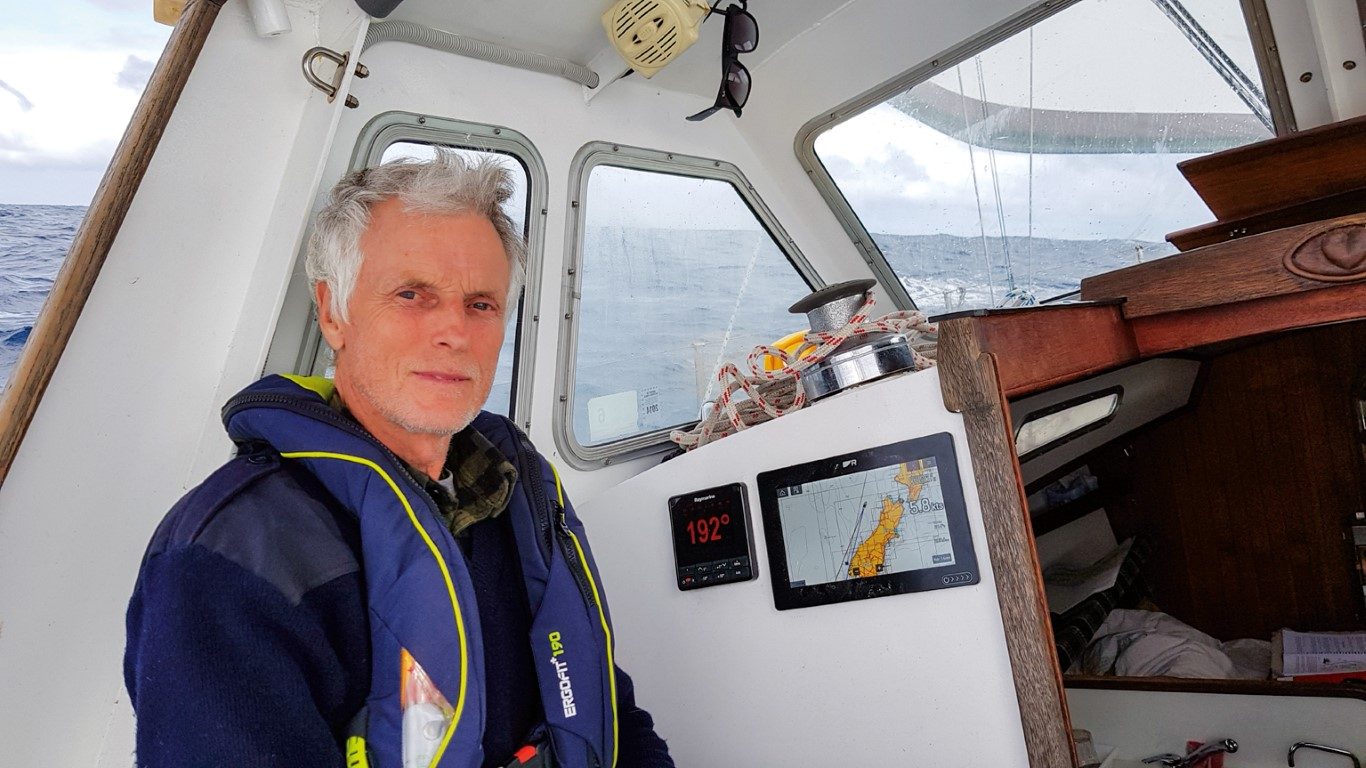
And yes, Mike and his yacht Cavatina had the lot thrown at them on this trip too – including 12 hours running under bare poles in 60 knots off the South Island’s east coast. But he’s seen it all before.
You may recognise Mike’s name as the regular mate aboard Henk Haazen’s remarkable ice-capable steel yacht Tiama. Together they’ve taken many scientific expeditions – DOC ecologists, NIWA and MFAT researchers – to New Zealand’s sub-Antarctic Islands, to the Balleny Islands, the Ross Sea, and Antarctica itself.
Like many, he baulked at the confines of the Covid lockdown. His mood developed into an immediate action plan – a fundraising trip, a solo circumnavigation of New Zealand. The vessel for the trip – a steel, Queensland-built Van der Stadt 34 sloop, with a hard doghouse – entirely suited the bill.
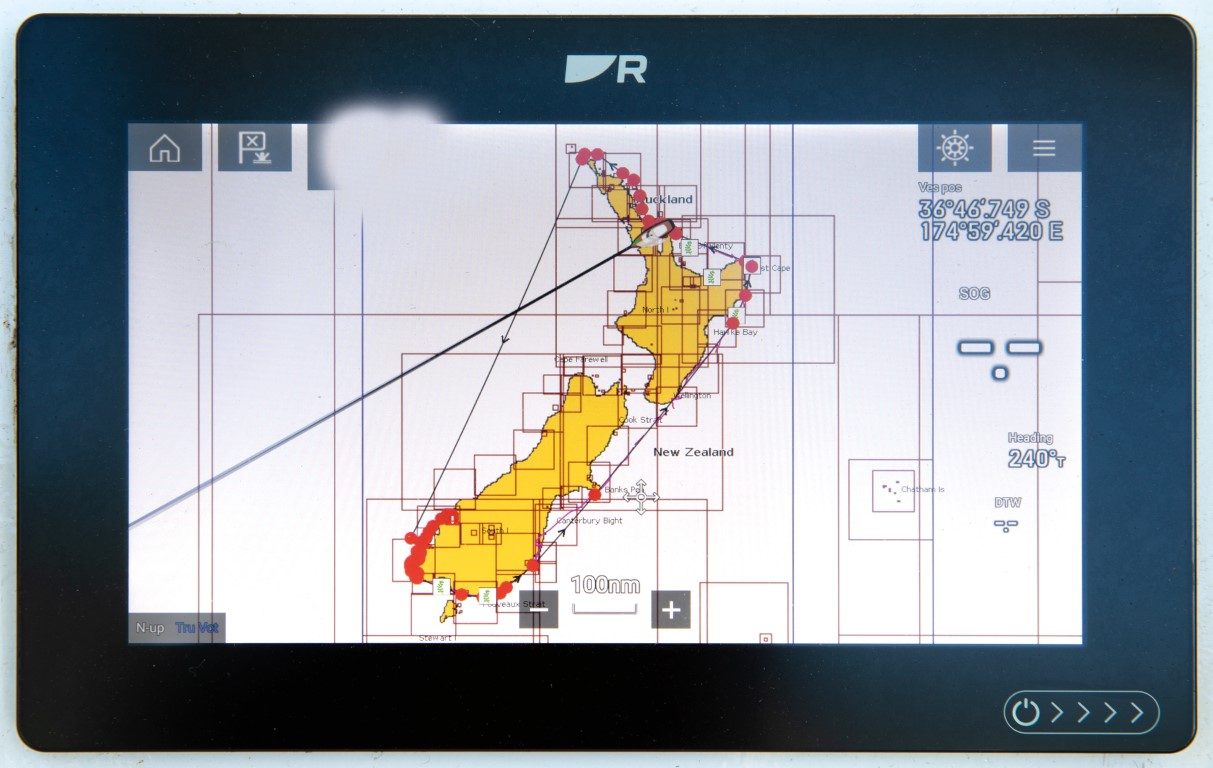
Cavatina was going at a pleasing ‘lockdown price’ and he knew what he wanted for his circumnavigation yacht. He’s always been around boats, and when he returned to New Zealand in 1985 after an extensive OE, he and wife Vibhusha bought a 36-foot, triple-skin kauri yacht.
She was built by Richard Wilson, and named Tribute, in honour of his father Brin. In the free-and-easy time before kids, Mike and Vibhusha sailed Tribute to Alaska and back, by way of a string of Pacific Islands – French Polynesia, the Marquesas and Hawai’i.
He also gained a commercial skipper’s ticket and has driven the Waiheke fast ferries for four years. He’s delivered superyachts across the Atlantic. He was mate and engineer on the ex-Danish royal yacht Galema (now in Auckland). He served on the ship Braveheart, which supplied Pitcairn Island during the alleged sex crimes trials there. The ship would bring supplies and legal people to the small island and ferry them backwards and forwards from and to the closest airstrip at Manureva Island.
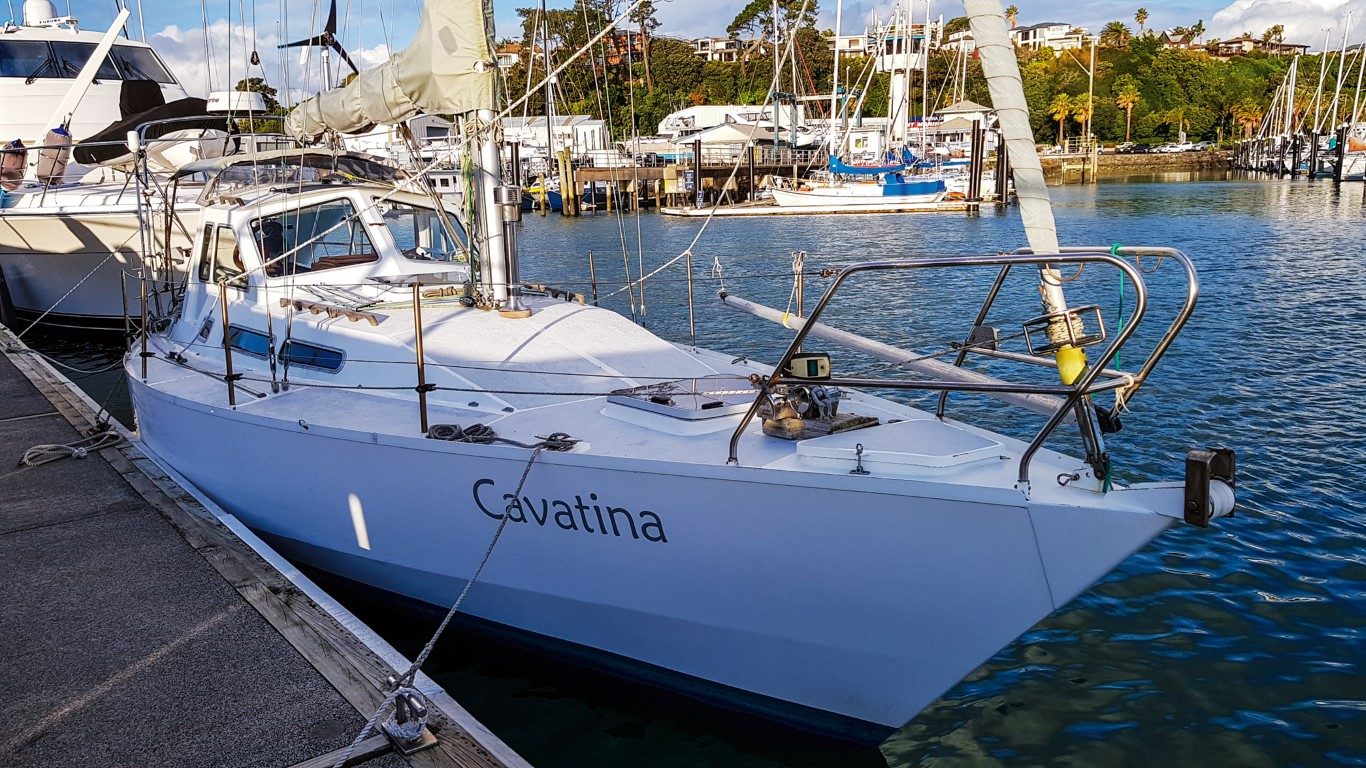
By Friday September 4, Cavatina was lying at Waiheke Island, ready to go. The voyage’s fund-raising was for the continued restoration of Kate, a classic sailing boat now back on the water around Waiheke Island. The circumnavigation – counter-clockwise – eventually raised $7,000 for Kate and raised a heap of awareness about her restoration.
His blogposts gathered a keen audience. They ranged from the trivial problems besetting any offshore sailing trip, to things way more epic, sometimes life-threatening. Here’s a sample:
Tues Sept 8: Hove-to in the lee of Cape Brett to fix a jammed reefing line. Quite a ride up the coast last night with strong SE wind and 2-3m seas… Came in between Piercy Island and Cape Brett through a bit of a maelstrom but the birds were loving it. Thousands of diving petrels, sooty shearwaters, fluttering shearwaters and fairy prions in feeding frenzy.
Wed Sept 9: Now I am motor-sailing, after first tightening the squealing alternator belt, then removing a piece of wood from the engine box which the engine had been vibrating against. This cured a loud tapping that sounded like either the prop was going to fall off or the engine self-destruct. Then the Iridium died – completely. Eventually I removed its battery and tested it – 4.5 volts and it runs on 4.7 volts. Nothing wrong with the battery. Put it back in and it started up. So there you have it folks: if your piece of electronic trickery stops working just turn it off and then on again…
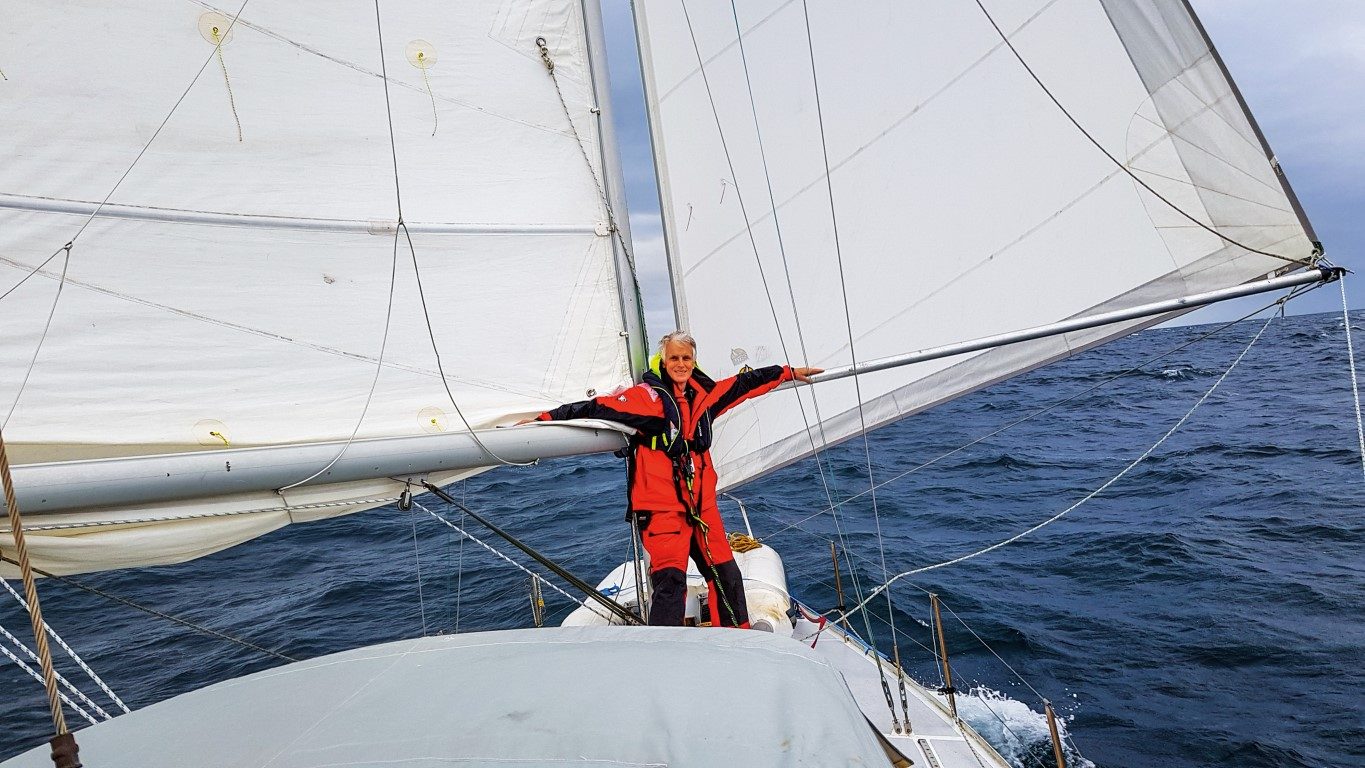
Rounding Cape Reinga: Came up to North Cape last night and dropped the pole off the genoa and reached along the coast past Tom Bowling and Spirits Bay. Early morning light brings me to Cape Reinga in thankfully quite placid conditions. It can be a fearsome place here where the Pacific Ocean meets the Tasman Sea and all their associated waves, swells, currents and tidal streams collide over a series of banks. There are always rollers breaking over these and it pays to skirt around them keeping outside the 50m depth contour.
Back where I started from, Thurs Sept 10: At least latitude-wise, I am at the same point where I departed Waiheke Island – but 150 miles to the west out in the Tasman. Here the sea is nearly 2,000m deep and there are a bunch of submarine cables running directly underneath me, no doubt packed full of internet traffic. As I type this on my phone a squall comes through, but I am already down to the second reef and though pressed hard by the 30kt winds we ride through it comfortably. The torrential rain flattens the tops of the waves but I sit dry as a bone in the doghouse. I love my doghouse…
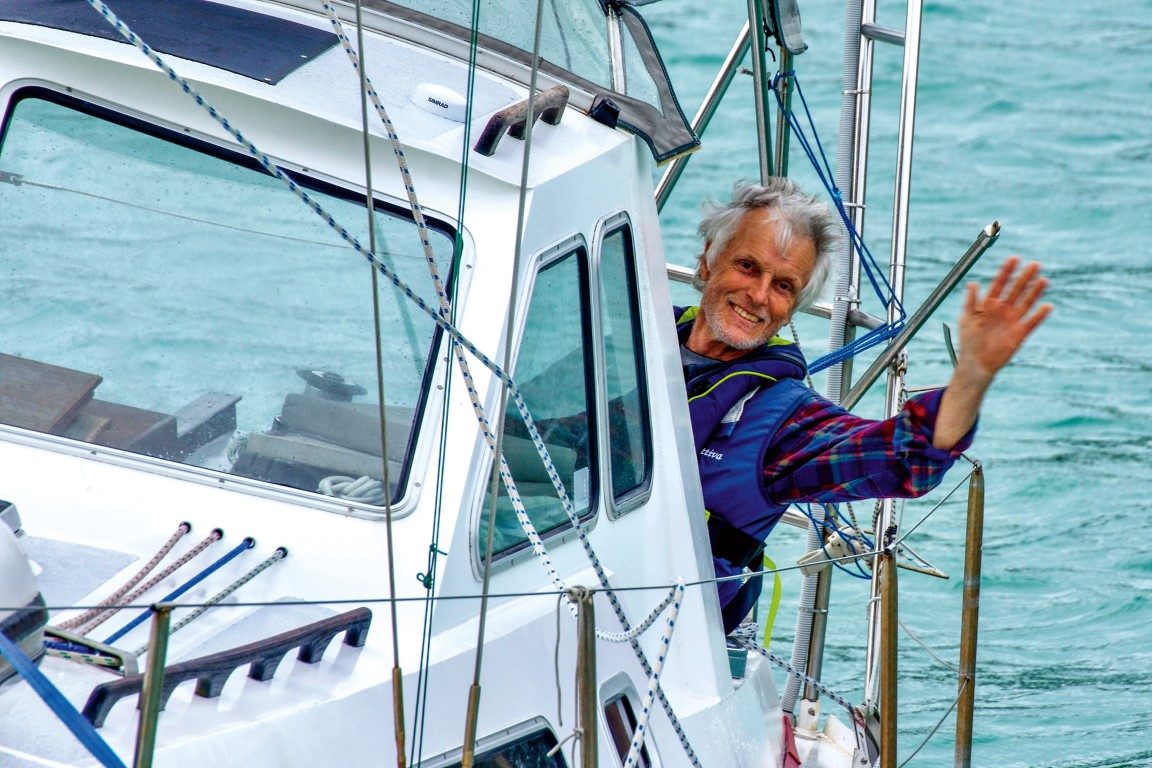
Anticyclonic gloom: Morning brings a grey sky and sea with a cold westerly wind. Reflects my mood a bit as I was up and down all night making course adjustments, reefing and furling, shaking out reefs and unfurling and adjusting the preventer until I gave up and just jogged along under reduced sail.
Crossing the centre of the high: It’s mirror calm out here, like a lake of quicksilver that pulses and undulates with the undying swell. Even the mollymawks have given up and bob about looking rather disgruntled. Two seals came to visit, poking their whiskery snouts out of the water and regarding my passing with limpid eyes.
The ups and downs of life, Friday Sept 11: Just after 0900 we came off the top of a wave that had nothing behind it and all five tons of the boat plus me hit the bottom of the trough with a terrible crash. After I had checked my fillings were still in place I realised we had rounded up into the wind and looked out the back to see the autopilot ram had broken off its mount. The rudder must have kicked so hard when we hit bottom that it sheared off.
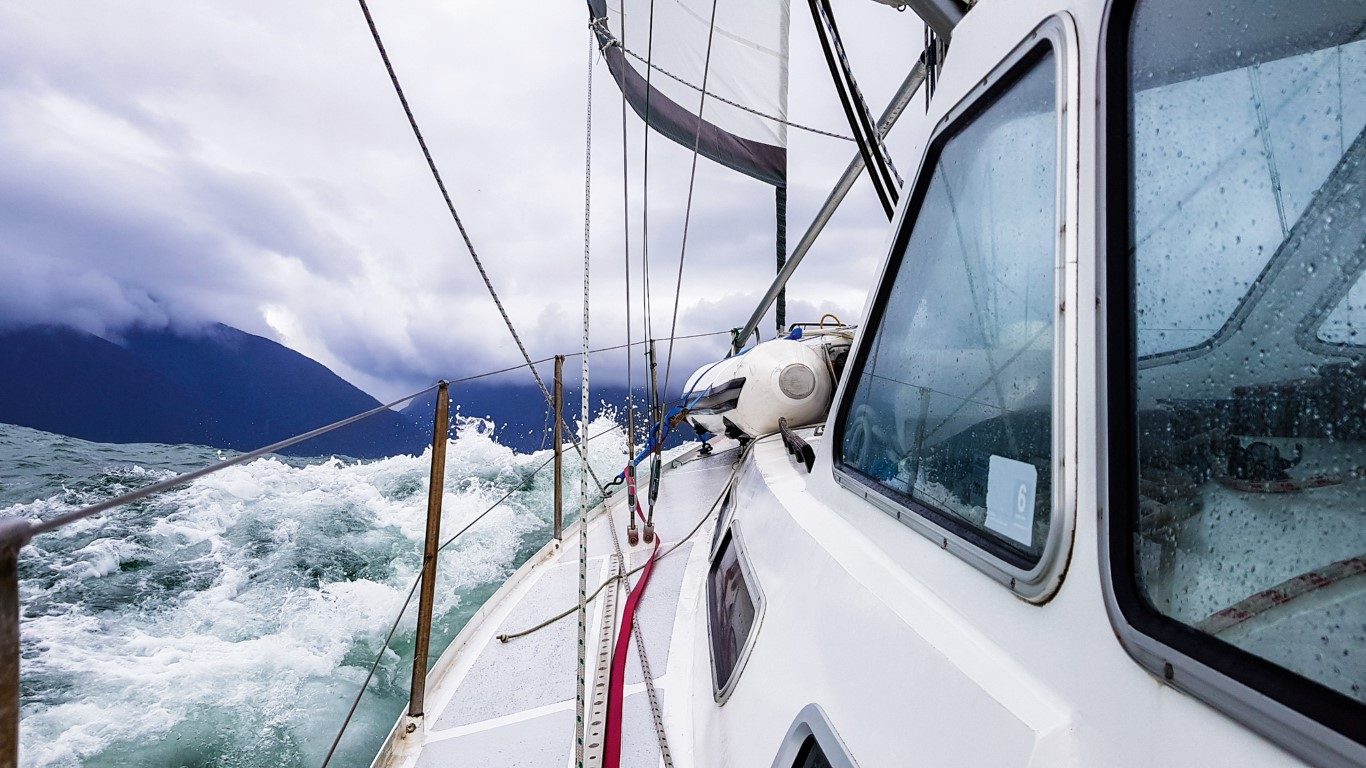
Sunset in the Tasman, Sat Sept 12: A lovely sunset this evening with soft pastel shades of pink and orange spreading across the sky. I am almost halfway down the West Coast now with about 370 miles to run to Doubtful Sound.
Running for it, Tuesday Sept 15: I got absolutely hammered last night with winds of 40kts and 5m seas. I’ve had enough of the last two days incessant pounding on the hull. The final straw came when I was standing in the doghouse and a giant wave completely buried the boat and nearly threw me down the companionway as we were slammed right over on our side. I have given up trying to reach Doubtful Sound and am now running directly downwind towards Milford Sound where I hope to find a safe haven.
Milford Sound, Tuesday Sept 15: Yay! Gybe round Dale Point and into the Sound proper. Mist, sheer snow-capped peaks, threads of waterfalls everywhere descending thousands of feet. And the sea is flat!
A world of water: I feel like I am living in some mystical water world where it never stops raining and everything lives and breathes in a liquid medium. All words and thoughts relate back to the elements of wind and water against the backdrop of the soaring rocky peaks that surround me and whose roots cradle the deep green depths on which I ride… Higher up it is snowing. If it is not raining it is hailing, mixed up with some thunder and lightning, and always there is wind lashing spray off the water and tearing the perpetual plumes of the waterfalls into horizontal streaks. It is wild, elemental and extraordinarily beautiful.
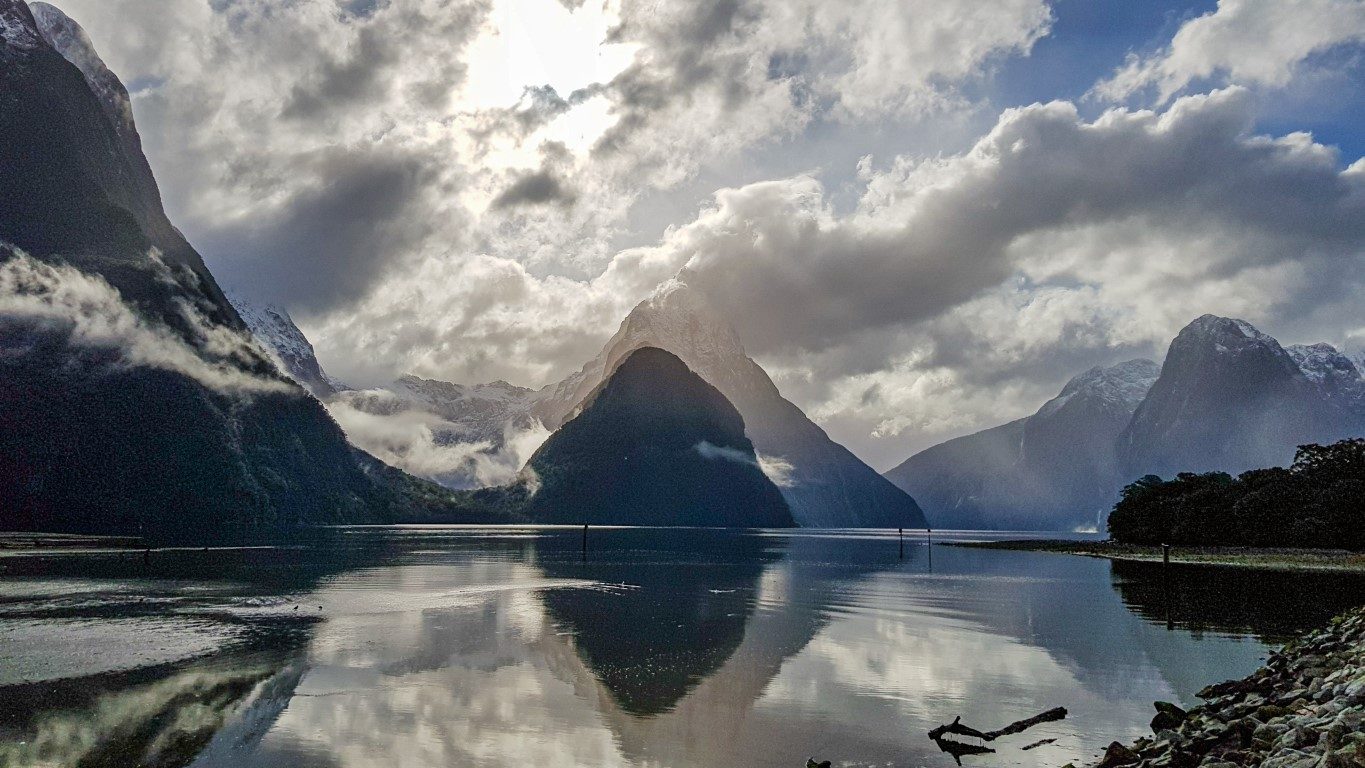
The call of the kea: Sitting on a mooring in Deepwater Basin. It is incredibly quiet and still. The only sound the burbling of my Caveman TV (the Dickinson diesel stove), and high up in the mist the call of the kea.
From this remote spot, Mike was able to contact Auckland’s Half Moon Bay Electrical (by Iridium satellite phone) to order a spare autopilot and have it delivered to the Fiordland Lobster Company wharf in Deepwater Cove, where he also topped up with fuel.

From The Hare’s Ears to kakapo country, Wed Sept 23: After clearing the Shelter Isles and the aptly-named outpost sentinel of The Hare’s Ears, we spend the first hour in a confused, lumpy sea, left over from the last few days of stormy weather. As we parallel the rugged coastline I watch the huge swells that have been rolling under us explode in great fountains of white against the rocks, smashing with tremendous power into the jagged coastline.
The mountains rise steep from the sea, clothed in wind-sculpted rata and olearia, here and there scarred with great rocky slips, a legacy of a massive rain event last year. I first aim straight for Breaksea Island. Here some of the few remaining kakapo find sanctuary in a predator-free environment. We amble up the nice quiet sound and find good anchorage between Harbour Island and the shore. The bellbirds are singing in the beech trees.
Puysegur Point to port, Fri Sept 25: I have resisted the siren song of a safe anchorage and am heading off into the night. I have just passed Puysegur Point, reputably the windiest place in New Zealand. 25kts behind me and it should be a fast run tonight.
Mike only stopped twice – in Fiordland and at Bluff. The notorious tidal race at Bluff had him in its grip – it took three hours to motor from the entrance to the wharf, against a full ebb! “The harbour has a very fast tidal stream running at up to 7kts at times and with wind against tide I have seen [from Tiama] 2m standing waves in the channel. Today was about average, so I was motoring at 5kts against a 4kts outgoing tide.”
And he adds a bit of oddball intel about Bluff Harbour: “All the docks have tyres hanging down – giant mining truck tyres – and with a 2.7m tide if you get your gunwhale caught under one of these, it will sink you as the tide rises. There are giant piles of woodchips, ready for export, and on a windy night they rain sawdust and grit down on your boat. On a really windy night the stacks of empty containers blow over, and you think the world is coming to an end.”
For once, Mike allows himself some modest skiting: “Fortunately I know Bluff well and it was with a certain elan and insouciance that I navigated this hell-hole of a post-apocalyptic port.” Certainly, a far cry from the sublime nature of the Sounds!
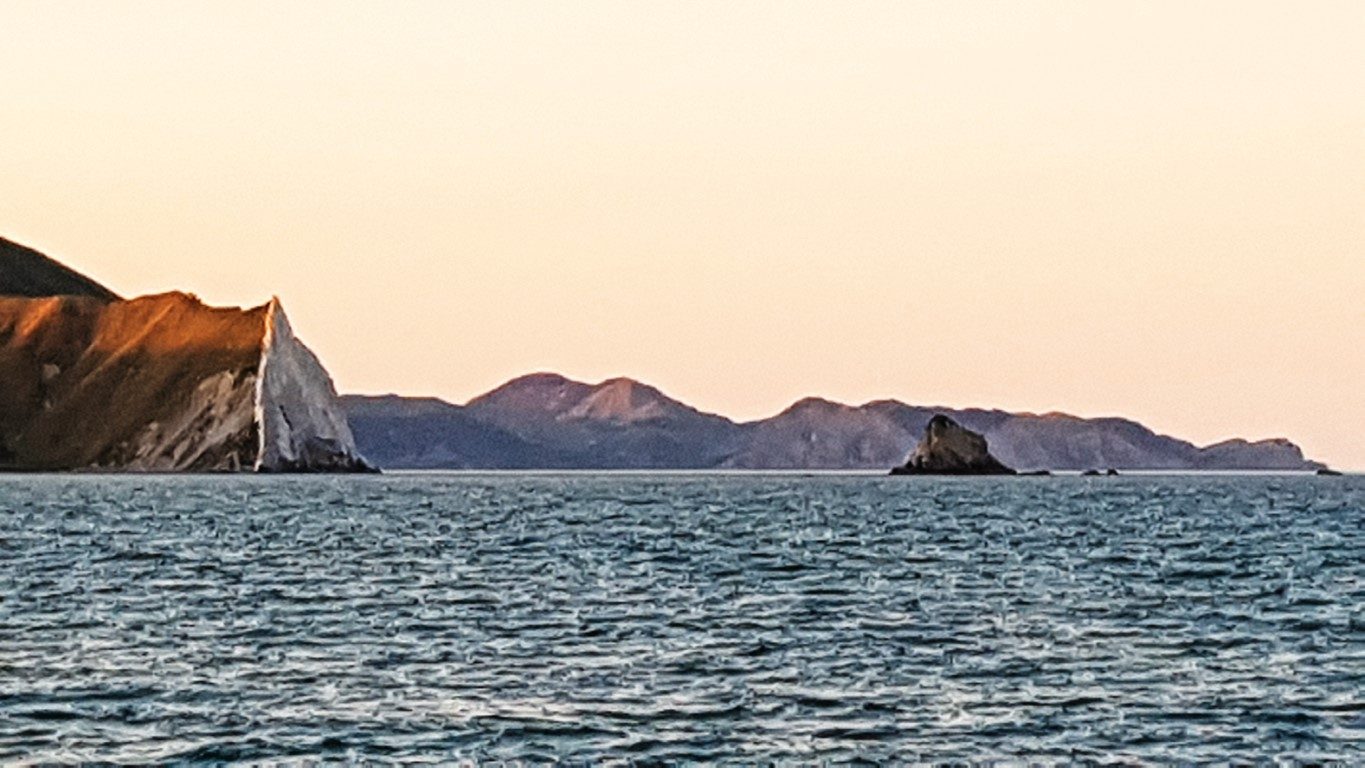
A new challenge, Sunday Sept 27: I know there are squalls out there in the blackness just waiting to pounce. It is freezing. That wind is bitterly cold. I need to dry some things out. For my stupid act of the day I left the quarter berth porthole unlatched and a wave filled the cockpit. It burst the porthole open and fire-hosed my bunk. My nice warm burrow is now a soggy mess. I am not a happy marmot.
The Last Cape, Wed Oct 7: 1100 and I round Cape Colville, the last turning point of my voyage and now it’s a straight leg to Matiatia, my home port and mooring on Waiheke Island. Straight ahead would be very nice, but it’s blowing right from where I want to go….
The circle is complete: At 1610 I crossed my outbound track, surging into Matiatia in a brisk southwest wind. I rounded up in the lee of the headland, furling the genoa and dropped the main for the last time. After a month at sea I felt like an albatross folding its wings as it returns to land from its surging across the boundless oceans….
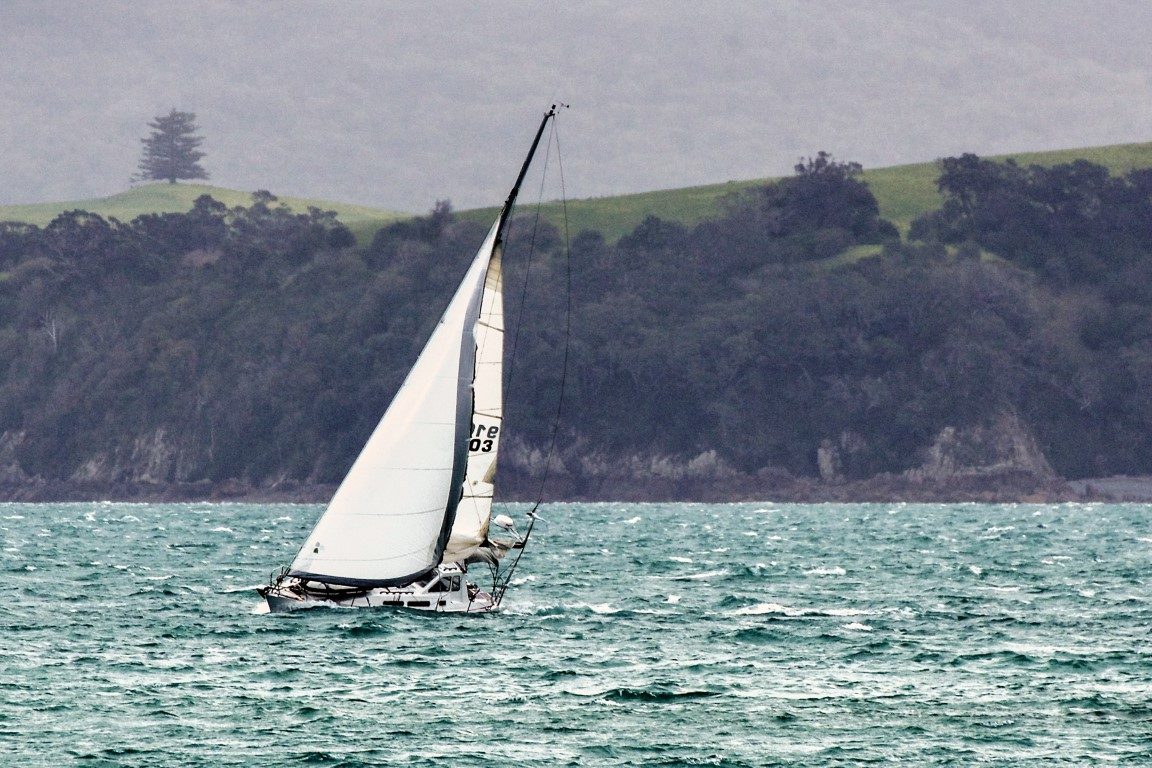
On the dock – as I glide into the wind, finally engineless simply because I have run out of fuel – are my dear friends and family. They have come to help and share in what is for me a very moving moment. Their kindness and care touches me deeply.
The challenges of solo sailing are great – and mostly mental and emotional. Says Mike: “I have sailed 2,500 miles around New Zealand, through triumphs and disasters, challenges great and small, through happiness and despair. Through every emotion really. The hardest part has been dealing with myself, with the little mind that wants to give up or complain or be lazy or just feel sorry for itself.”
So how does he rate himself as a solo sailor? “I can’t say I enjoyed it all the way. It was a good challenge, with some fantastic times. I had Milford Sound all to myself, which is pretty unique and there were those perfect moments when the moon was rising or there were dolphins zooming around the boat, and you feel at one with the whole universe and the whole experience of it.
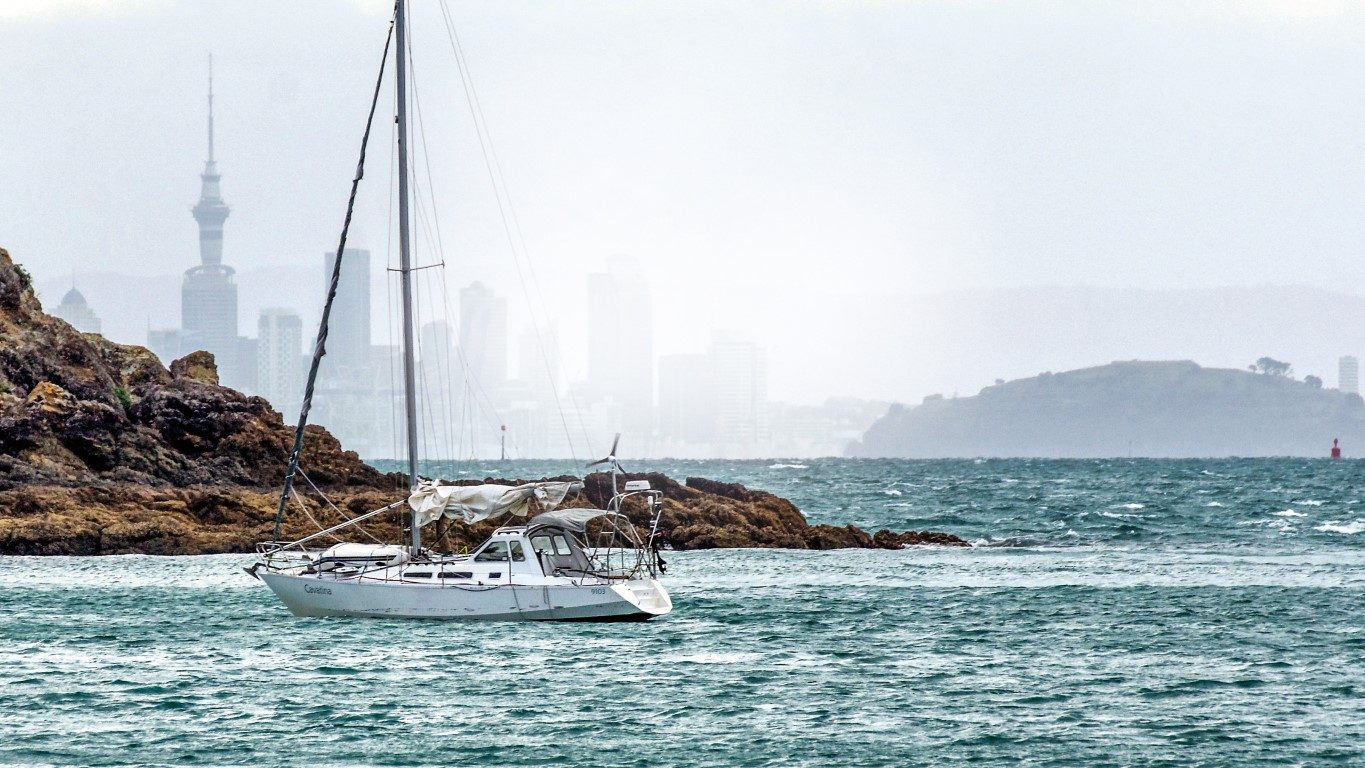
“But it was pretty epic and pretty tough. I feel like I have been through the wringer a bit.”
And there’s a final caveat – and perhaps the ultimate testimonial to his extreme escape from the Covid thing: “I feel better for the experience, cleansed in some way by the wind and the salt spray.”




